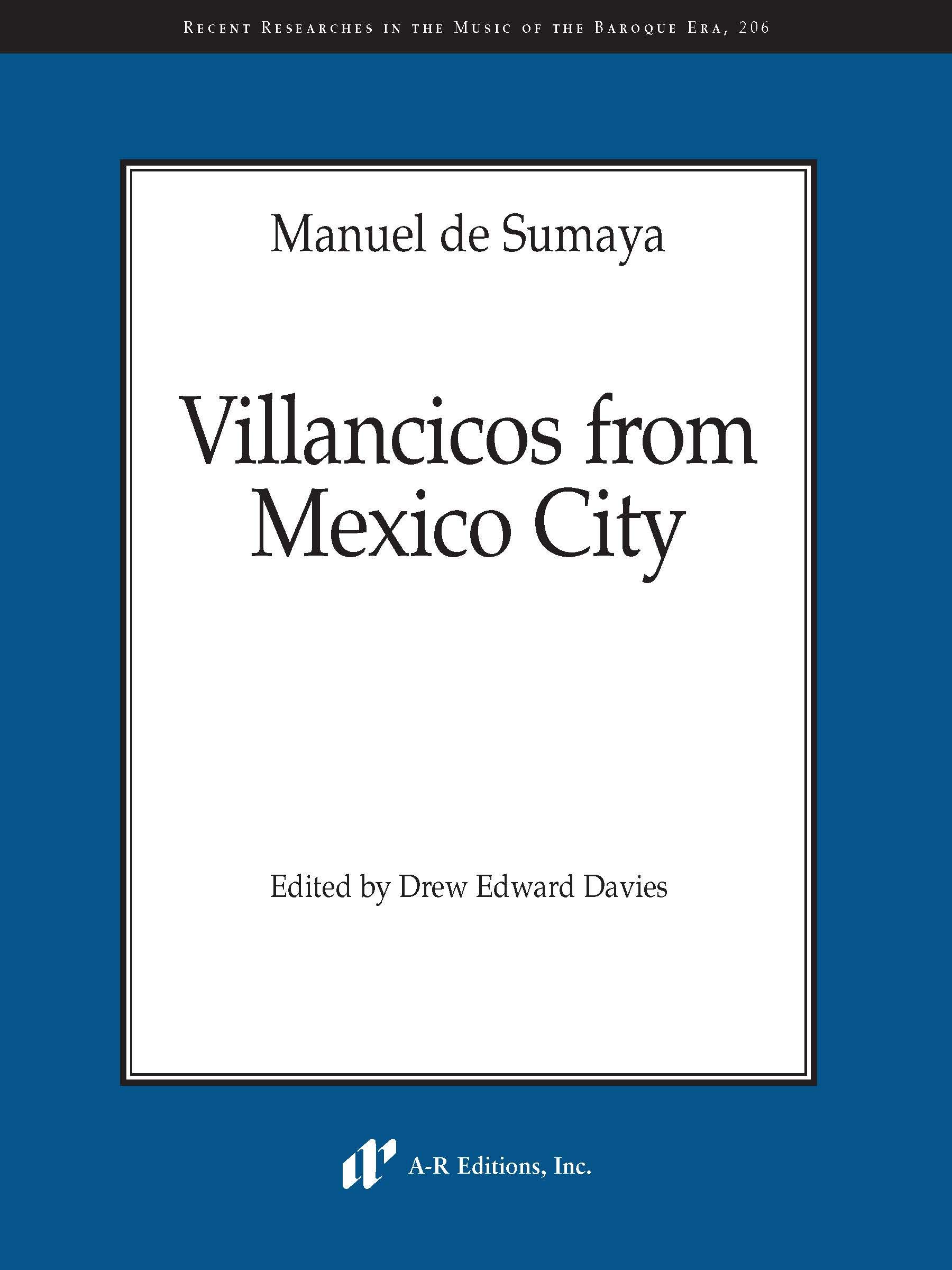Edited by Drew Edward Davies
Recent Researches in the Music of the Baroque Era, 206
xliii, [6 plates] + 231pp.
A-R Editions, Inc. ISBN 978-1-9872-0202-1 $275 (Violin parts available $14)
Buy it HERE
Manuel de Sumaya (c. 1678-1755) was chapel master at the cathedral in Mexico City from 1715-39 and the 32 complete works in this impressive volume (plus transcriptions of two further fragments) date from this period.
The villancico form has a verse and refrain basis. Sumaya’s Mexico city pieces include 14 for one “choir” (of between two and four voices, two with added violins), 14 more for two “choirs” (four to eight voices, again two with strings), and four for three “choirs” (11-12 voices). It is difficult to look at music for choirs where the bottom line of each is called bass and the rhythm mostly matches the voices above (and thus diverges from the basso seguente at the bottom of the texture) and not assume that these lines must have been sung too; but that is superimposing European expectations – played by the instruments Davies suggests in his detailed introduction, the lack of a texted bass part might be irrelevant.
Some of his translations of the texts are a little less literal than they could be, but a great help for performers is the fact that all of the verses are underlaid so there is no need for the mental gymnastics required with other editions on how to elide the various words ending and beginning with vowels so that the text is properly stressed! One of the strangest pieces is no. 20, for the feast of the Assumption, Hoy sube arrebatada. As well as a tenor voice, it features two violins with bass, as well as untexted treble and bass parts that make up “choir one”. As elsewhere, the string writing is more elaborate than that for voices; Davies’s suggestion that the untexted treble be played on a wind instrument (and the bass, too, presumably) might make sense of something that just looks quite odd!
In all honesty, I cannot see choirs queueing up to pay so much for what is a very worthwhile volume of interesting music, so I sincerely hope that A-R Editions can be persuaded to authorise off-prints for inclusion in concerts.
Brian Clark
